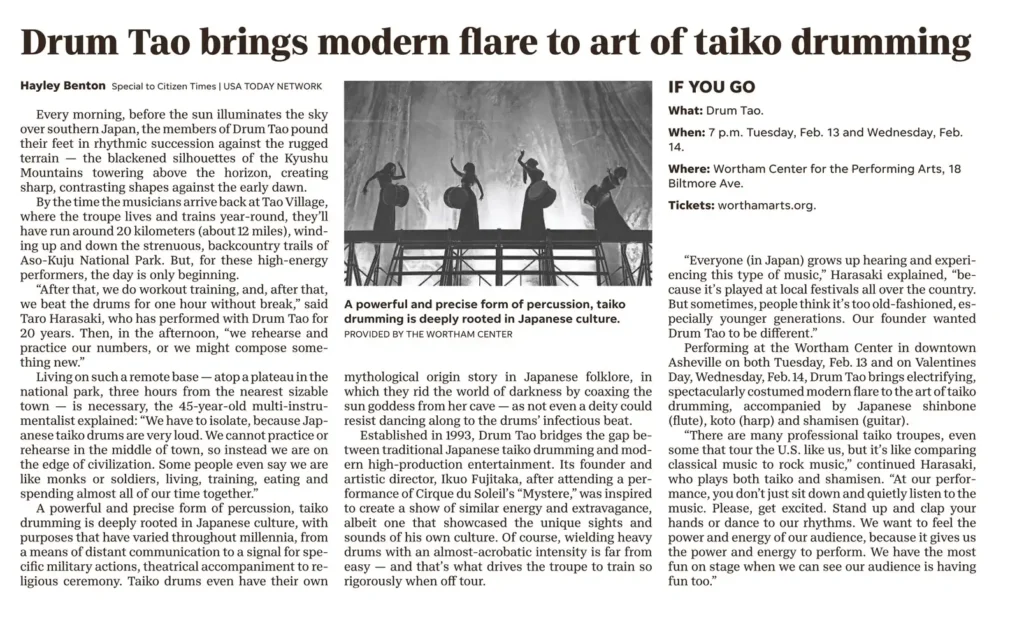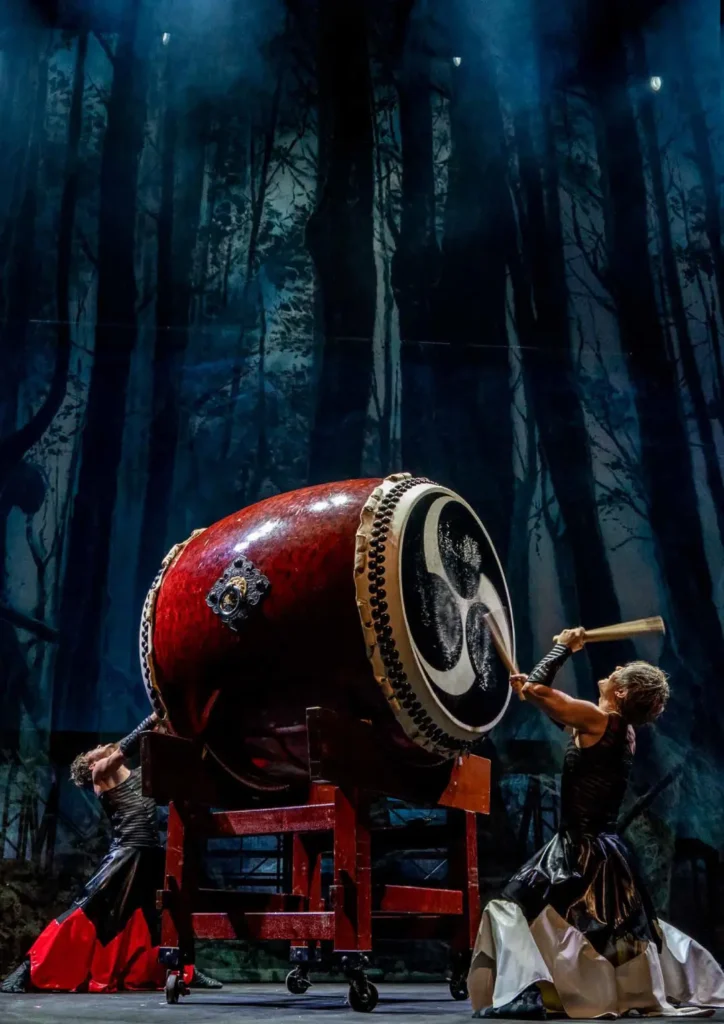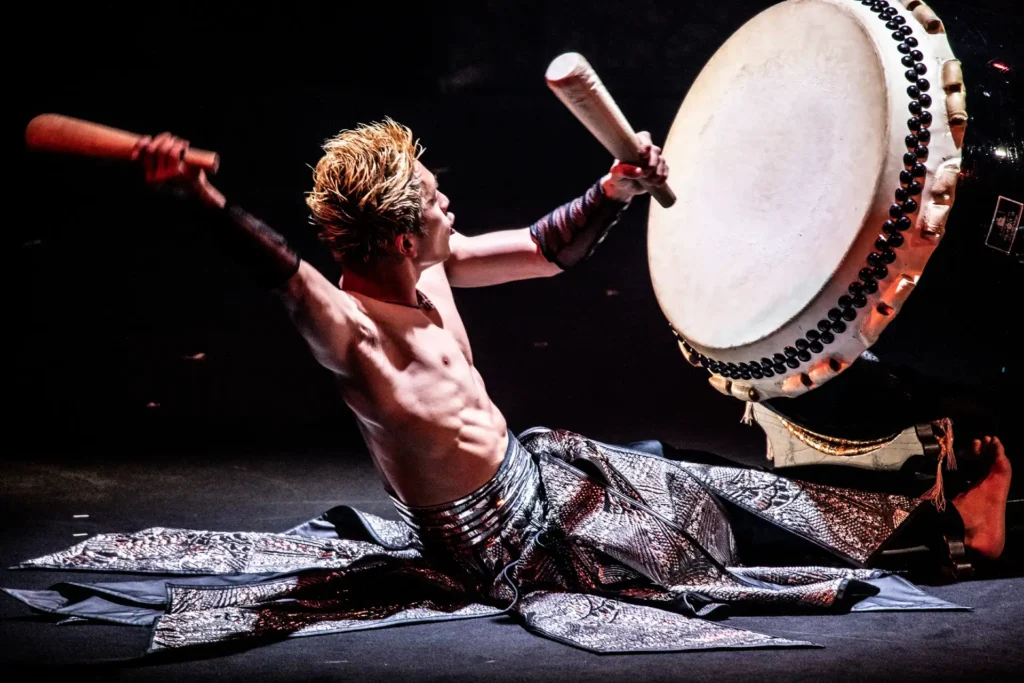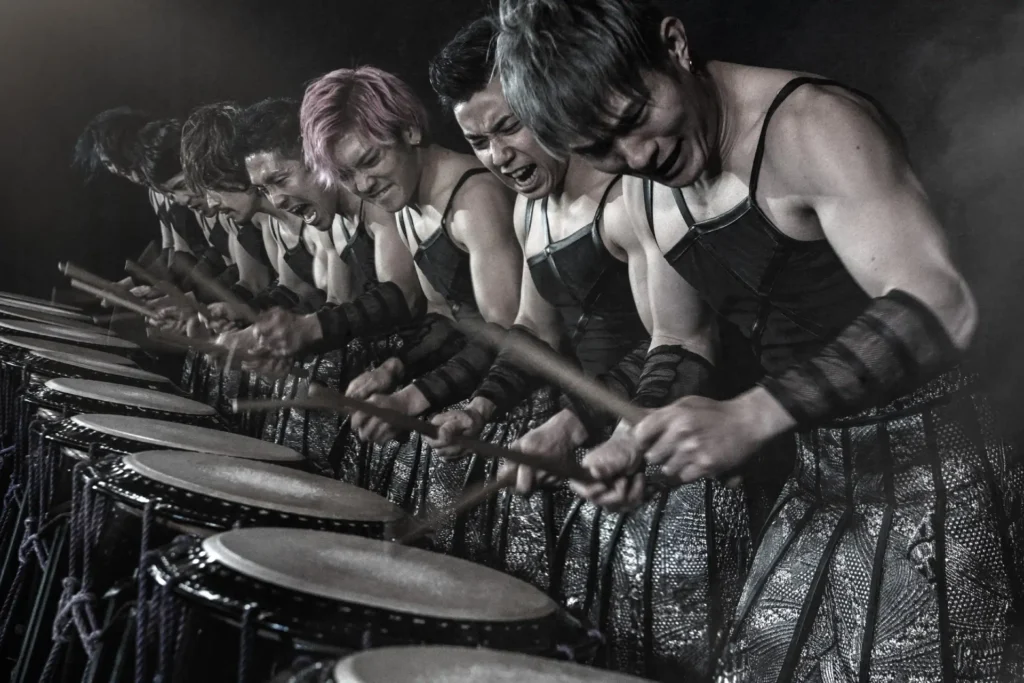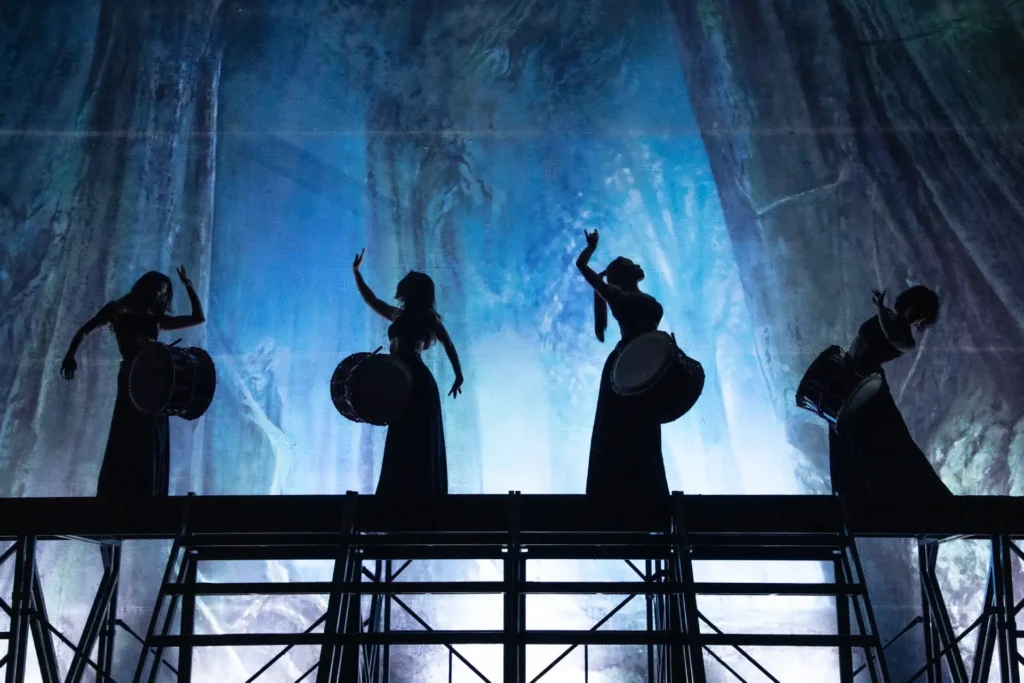Every morning, before the sun illuminates the sky over southern Japan, the members of Drum Tao pound their feet in rhythmic succession against the rugged terrain — the blackened silhouettes of the Kyushu Mountains towering above the horizon, creating sharp, contrasting shapes against the early dawn.
By the time the musicians arrive back at Tao Village, where the troupe lives and trains year-round, they’ll have run around 20 kilometers (about 12 miles), winding up and down the strenuous, backcountry trails of Aso-Kuju National Park. But, for these high-energy performers, the day is only beginning.
“After that, we do workout training, and, after that, we beat the drums for one hour without break,” said Taro Harasaki, who has performed with Drum Tao for 20 years. Then, in the afternoon, “we rehearse and practice our numbers, or we might compose something new.”
Living on such a remote base — atop a plateau in the national park, three hours from the nearest sizable town — is necessary, the 45-year-old multi-instrumentalist explained: “We have to isolate, because Japanese taiko drums are very loud. We cannot practice or rehearse in the middle of town, so instead we are on the edge of civilization. Some people even say we are like monks or soldiers, living, training, eating and spending almost all of our time together.”
A powerful and precise form of percussion, taiko drumming is deeply rooted in Japanese culture, with purposes that have varied throughout millennia, from a means of distant communication to a signal for specific military actions, theatrical accompaniment to religious ceremony. Taiko drums even have their own mythological origin story in Japanese folklore, in which they rid the world of darkness by coaxing the sun goddess from her cave — as not even a deity could resist dancing along to the drums’ infectious beat.
Established in 1993, Drum Tao bridges the gap between traditional Japanese taiko drumming and modern high-production entertainment. Its founder and artistic director, Ikuo Fujitaka, after attending a performance of Cirque du Soleil’s “Mystere,” was inspired to create a show of similar energy and extravagance, albeit one that showcased the unique sights and sounds of his own culture. Of course, wielding heavy drums with an almost-acrobatic intensity is far from easy — and that’s what drives the troupe to train so rigorously when off tour.
“Everyone [in Japan] grows up hearing and experiencing this type of music,” Harasaki explained, “because it’s played at local festivals all over the country. But sometimes, people think it’s too old-fashioned, especially younger generations. Our founder wanted Drum Tao to be different.”
Performing at the Wortham Center in downtown Asheville on both Tuesday, Feb. 13 and on Valentines Day, Wednesday, Feb. 14, Drum Tao brings electrifying, spectacularly costumed modern flare to the art of taiko drumming, accompanied by Japanese shinbone (flute), koto (harp) and shamisen (guitar).
“There are many professional taiko troupes, even some that tour the U.S. like us, but it’s like comparing classical music to rock music,” continued Harasaki, who plays both taiko and shamisen. “At our performance, you don’t just sit down and quietly listen to the music. Please, get excited. Stand up and clap your hands or dance to our rhythms. We want to feel the power and energy of our audience, because it gives us the power and energy to perform. We have the most fun on stage when we can see our audience is having fun too.”
IF YOU GO
What: Drum Tao 夢幻響
When: 7 p.m. Tuesday, Feb. 13 and Wednesday, Feb. 14
Where: Wortham Center for the Performing Arts, 18 Biltmore Ave.
Tickets: worthamarts.org/drum-tao
